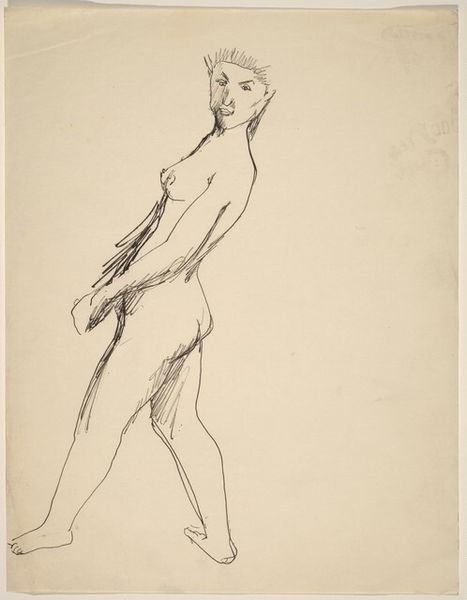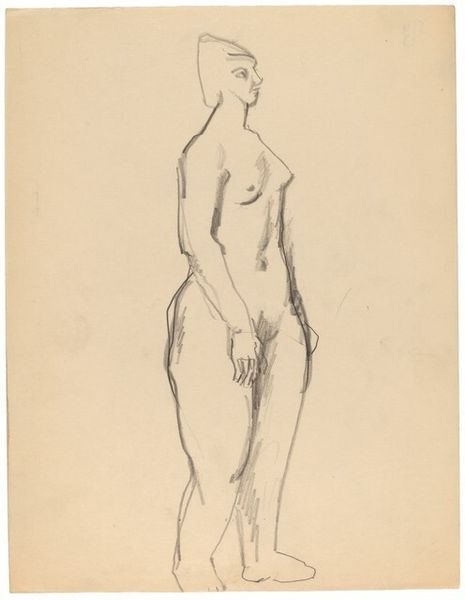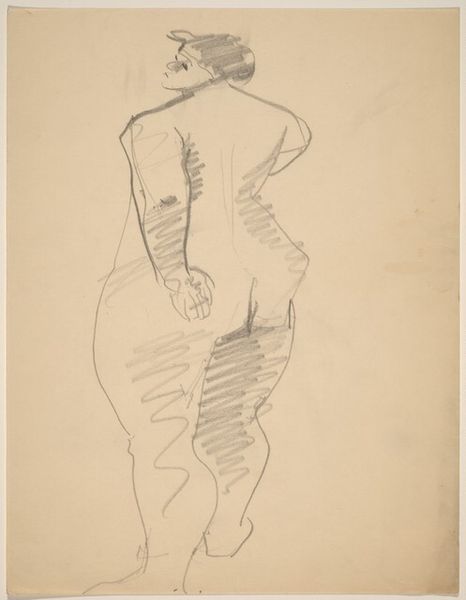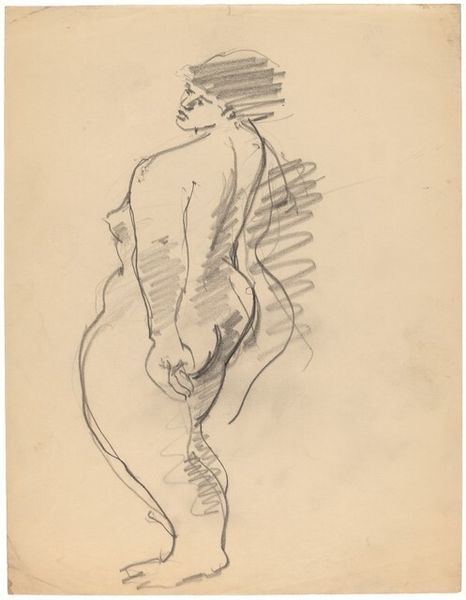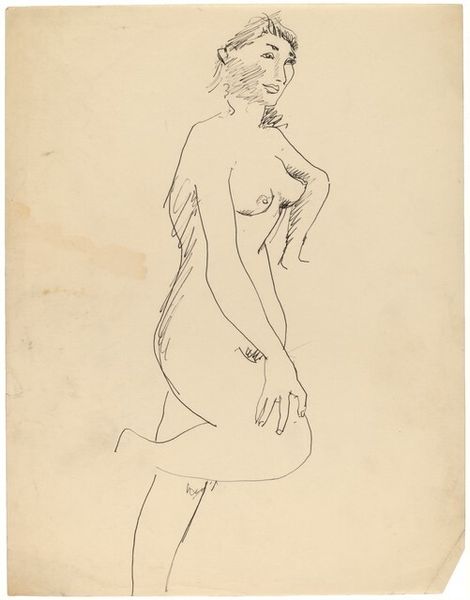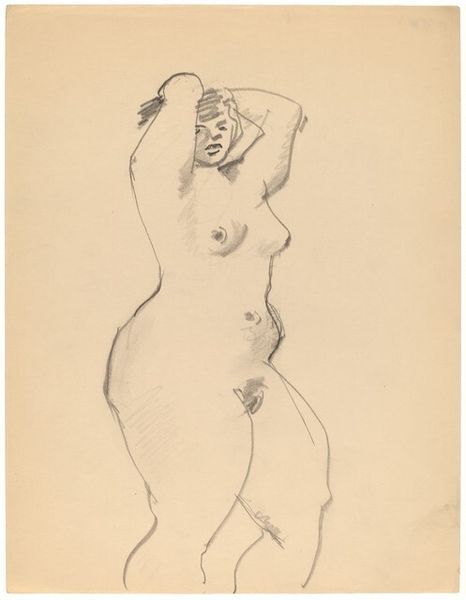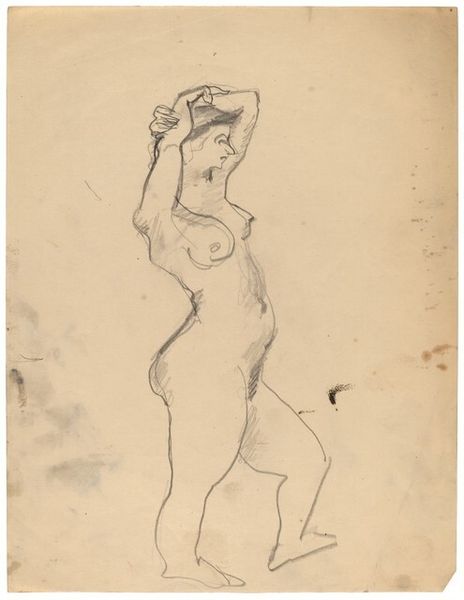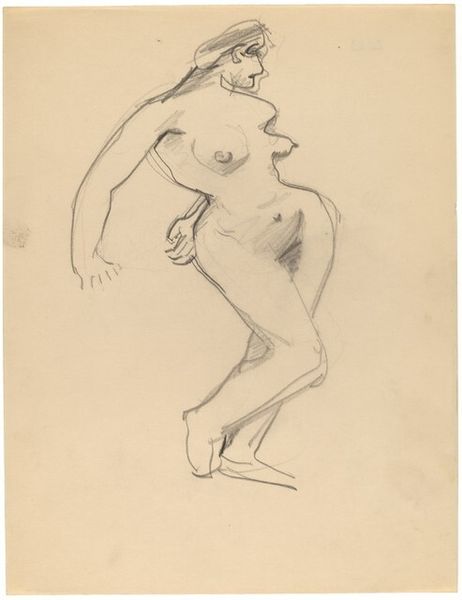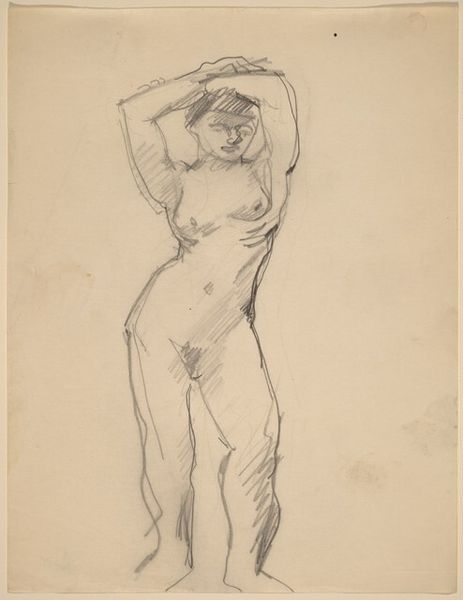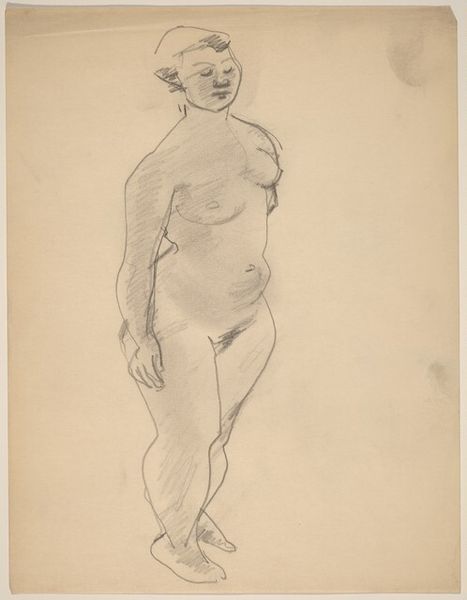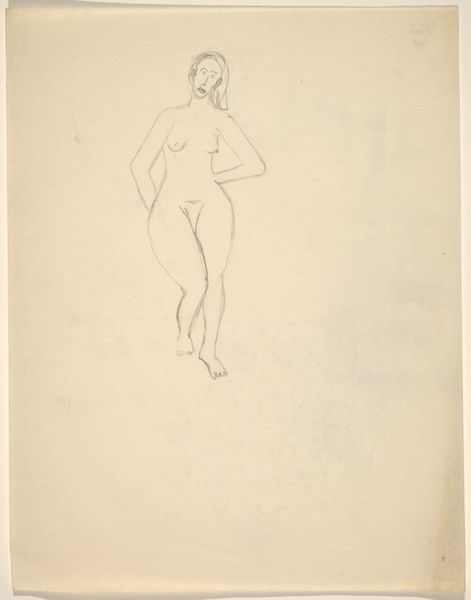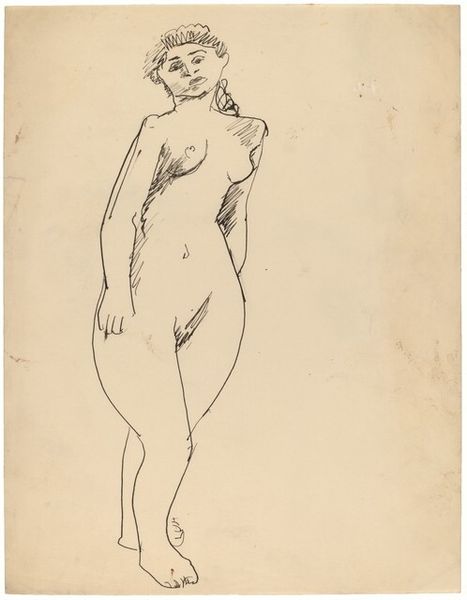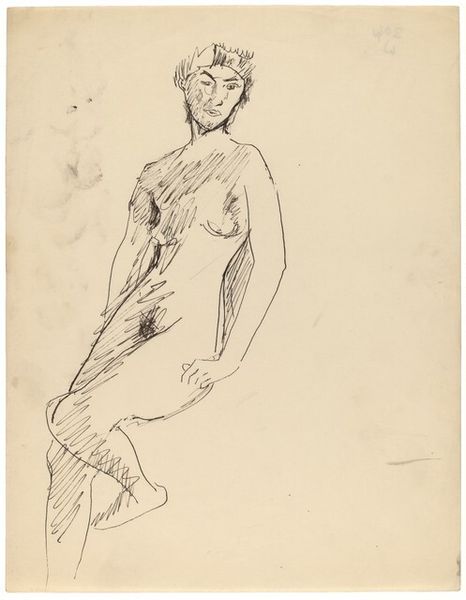
drawing, pencil
#
portrait
#
drawing
#
figuration
#
pencil
#
nude
Dimensions: overall: 27.9 x 21.6 cm (11 x 8 1/2 in.)
Copyright: National Gallery of Art: CC0 1.0
Curator: Today, we're looking at a drawing attributed to Mark Rothko: "Nude Turned to the Left, Three-quarter View, Seen from the Back". It's rendered in pencil, depicting a standing nude figure. Editor: You know, seeing it just now, it’s kind of haunting, right? The sketchy lines give this immediate, almost raw, sense of…vulnerability, I guess? Like a secret caught on paper. Curator: Indeed. Rothko's nudes, though less known than his color fields, engage with similar themes of human presence and emotional experience. Consider the historical context of nude portraiture, traditionally a domain of male artists objectifying female bodies. How might Rothko, through his distinctive style, be critiquing or subverting these conventions? Editor: That's heavy, but interesting. I didn’t initially jump to "critique," to be honest. The lines feel more like an embrace of the imperfect. The unfinished quality allows you to connect with the figure’s... humanness, flaws and all. It’s oddly more real than something hyper-realistic. Curator: Perhaps both readings hold water. It could be a study in perception, a look into how the incomplete still holds power and invites viewers to project themselves onto the form. Thinking intersectionally, we might examine how societal standards of beauty and representation play into our interpretation of the nude figure, regardless of Rothko's intent. Editor: Good point! I'm also digging how the minimal shading throws the shape into sharper relief. Did he do a lot of studies like this? I feel I should be familiar, but this more spontaneous thing is new to me somehow. Curator: He produced many life drawings, often revisiting the same models. The style does lean towards a less-polished academic exercise. It makes you wonder if these studies directly informed his later abstractions. Was he stripping figures down to the essence, much like he did with color? Editor: Totally. I love how the starkness gives you permission to fill in the blanks yourself, you know? Gives the work longevity because it can adapt with you in the same way dreams and feelings do. It really makes one ponder the depths of seeing. Curator: Precisely. It’s a testament to how even preliminary sketches can contain complex narratives about art, identity, and representation.
Comments
No comments
Be the first to comment and join the conversation on the ultimate creative platform.
